Test drive Volkswagen Corrado 1989 - 1995 hatchback
Spanish race on Russian roads
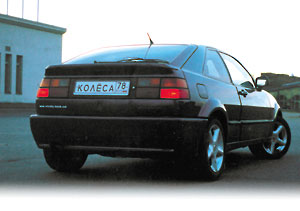 The car we represent can be safely attributed to the classics of the eighties. Its characteristic feature - in the intake system of this Corrado, a spiral supercharger is tired. Volkswagen specialized in such devices, and even then for a short period, from 1985 to 1994.
The car we represent can be safely attributed to the classics of the eighties. Its characteristic feature - in the intake system of this Corrado, a spiral supercharger is tired. Volkswagen specialized in such devices, and even then for a short period, from 1985 to 1994. Story.
With the Corrado model, the Wolfsburg concern intended to invade the niche of relatively inexpensive sports cars, which at first succeeded. However, it was much more difficult to defend the conquered positions. Sports compartment quickly went out of fashion, freeing the way to relatives and SUVs. The second negative factor for expansion was that exclusive goods are easier to promote under prestigious stamps, and the word Volkswagen was firmly associated with mass working machines.
Opel soon collided with the same problems, which launched his Calibra and European Ford in 1990, which organized ProBe II exports due to the ocean. A similar story came out with eight BMW. All these cars were lost by buyers by the mid-90s and one after another were discontinued.
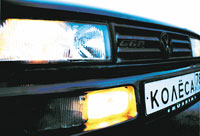 But back to Corrado. To reduce the costs of development and production and, ultimately, to reduce cost, the car was created using the existing nodes and assemblies. The compartment was based on the platform from Golf II, and engines, transmission, suspension details, interior elements were widely borrowed from the same golf, as well as the passato. The appearance of the machine was sculpted with branded designers with the active support of Wilghelm Karmann Co. stylists. From Osnabruk. By the way, she later engaged in the production of bodies and the final assembly of cars. As for the name of the model itself, it comes from the Spanish Correr, which means to rush, chase.
But back to Corrado. To reduce the costs of development and production and, ultimately, to reduce cost, the car was created using the existing nodes and assemblies. The compartment was based on the platform from Golf II, and engines, transmission, suspension details, interior elements were widely borrowed from the same golf, as well as the passato. The appearance of the machine was sculpted with branded designers with the active support of Wilghelm Karmann Co. stylists. From Osnabruk. By the way, she later engaged in the production of bodies and the final assembly of cars. As for the name of the model itself, it comes from the Spanish Correr, which means to rush, chase. Initially, since the fall of 1988, the car was equipped with a 1.8-liter 16-valve engine, but after a few months a version with a supercharger appeared. Corrado G60 has become the most dynamic car in the history of the Volkswagen brand, until it was replaced by an even hotter VR6. In different years, six different engines and two types of checkpoints were installed on Corrado: mechanical and automatic. In 1995, the car was resigned due to the lack of sufficient demand. The next five years, the Volkswagen leadership transparently hinted that it was about to introduce a new generation compartment, even some images and spy photographs drawn on a computer appeared, but so far this did not happen.
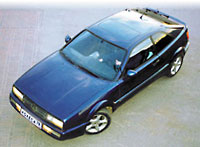 Outside.
Outside. Corrado is a hundred percent car for an amateur. We never came to a consensus on his appearance: someone considered him a handsome man full of energy and healthy aggression (especially he looks like non-standard low-profile tires, dimensions of 195/55R15), someone criticized the unbalanced forms-for Brown back and long front overhang. They agreed that the car was not ahead of their time, and many elements of its design managed to hopelessly become obsolete. Many, but not only automatically rising at speeds over 80 km/h, the posterior anti -wing.
By the way, also about iron: body elements and optics for Corrado are much more expensive than for golfs, and horror stories go into any framework for the prices of the final system even in Europe.
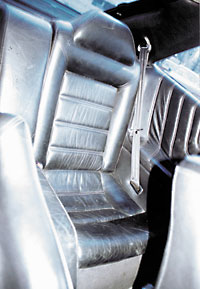 Inside.
Inside. The process of landing in the machine is most accurately characterized by the expression of immersion: firstly, due to the low location of the seats, and secondly, due to the gloomy color scheme of the interior. Sitting, you get the right sensation of a serious sports car: magnificent leather seats securely fix the body, the window line is at the shoulder level, the legs are extended in an effort to get the pedal drowned deeper, and there are plenty of place over the head. The skin of a steering wheel, small diameter and chubby, fits perfectly in the hands (which is also facilitated by the presence of adjusting the steering column in height), and the pedals are poured with pleasant elasticity, even slightly heavy. The massive steering wheel switches that can be reached, slightly moving your fingers. Indications of devices are read without problems, although the dashboard itself is excessively unsophisticated. In principle, the design of the interior as a whole does not shine with particular originality, but it is still necessary to make an amendment to the fact that the models have been hit for twelve years. Exclusive disadvantages can be attributed to the unprofitable ventilation control unit, where a tiny
the round handle switches the speeds, and the sliders are responsible for the distribution of air flows, a small (for a machine not equipped with the right pillow of safety) a glove box and wretched keys of electric windows. In the asset, it is worthwhile to record flawlessly functioning deflectors, a fan motor and convincing sizes of pockets in the doors. Undoubtedly, passengers will appreciate the backlight of the mirror hidden on the back of the right anti -loner visor.
At one time, Corrado was widely advertised as a four -seater compartment. I must say, the managers of promotion of Volkswagen products were cunning - rather, the machine is made according to the formula 2+2. The posterior seats are designed for people of a semantic physique: they are narrow, a sloping roof presses on top, there is not enough space for the legs. And outwardly, everything looks very stylish: two pretty chairs are equipped with headrests and three -point belts, separated by upholstered leather; There is also a leap armor, behind which there is a container for any little thing.
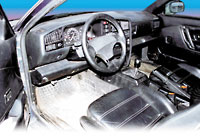 The first impression of the trunk: a purely decorative element. Nothing but a pair of bags will not fit into it. However, if you take into account that over long distances, Corrado is able to transport only two, you can try to throw back the back of the rear seat.
The first impression of the trunk: a purely decorative element. Nothing but a pair of bags will not fit into it. However, if you take into account that over long distances, Corrado is able to transport only two, you can try to throw back the back of the rear seat. And here a lot is surprising to the transformation of the car interior, as it turns out, the rear seats are not folded entirely, but again individually, and the maximum capacity of the cargo compartment exceeds 800 liters. This is a completely different conversation.
In move.
We launch the engine, and automatic belts helpfully fasten the driver and his neighbor, immediately setting up in a battle -man. However, before you break off, we recall something from the theory.
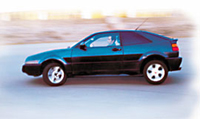 What is a spiral or G-shaped supercharger? Roughly speaking, it is two spirals, of which the outer is motionless, and the internal is fixed to the shaft leading a belt from the engine. When the shaft rotates, the movable spiral makes oscillatory movements (since its geometric axis does not coincide with the axis of rotation), as a result of which sickle cavities form in the injection, due to which the air is supplied to the engine. In sparing modes, excess supply of the supply of air return to the input of the supercharger, and with a sharp and significant movement of the gas pedal, the bypass damage is closed, and all the air is sent to the engine. By the way, before supplying to the motor, air passes through the cooler (the so -called intercooler). The width of the injection chamber is 60 mm, hence the name of the modification - G60. The advantages of this design are the responsiveness of the motor on the actions of the accelerator pedal in the entire speed range, as well as the torque and power enlarged on the bottoms. If we compare a spiral supercharger with analogues, then it is much more resistant to wear, since it has little rubbing parts, but it is structurally more difficult and requires precision accuracy in manufacture. In any case, Volkswagen, having completed the production of the Polo of the previous generation, decided to put the cross on spiral superchargers. Let's try what Corrado G60 is in the case. Across the dynamics gives pleasure not only with its confident, even and assertive character, but also by the fact that it is simply nice to control it. The successfully selected gearboxes of the checkpoint, the transparent drive of pedals and the clear work of the gear lever (only the moves are large) - this is the key to a comfortable and absolutely controlled acceleration.
What is a spiral or G-shaped supercharger? Roughly speaking, it is two spirals, of which the outer is motionless, and the internal is fixed to the shaft leading a belt from the engine. When the shaft rotates, the movable spiral makes oscillatory movements (since its geometric axis does not coincide with the axis of rotation), as a result of which sickle cavities form in the injection, due to which the air is supplied to the engine. In sparing modes, excess supply of the supply of air return to the input of the supercharger, and with a sharp and significant movement of the gas pedal, the bypass damage is closed, and all the air is sent to the engine. By the way, before supplying to the motor, air passes through the cooler (the so -called intercooler). The width of the injection chamber is 60 mm, hence the name of the modification - G60. The advantages of this design are the responsiveness of the motor on the actions of the accelerator pedal in the entire speed range, as well as the torque and power enlarged on the bottoms. If we compare a spiral supercharger with analogues, then it is much more resistant to wear, since it has little rubbing parts, but it is structurally more difficult and requires precision accuracy in manufacture. In any case, Volkswagen, having completed the production of the Polo of the previous generation, decided to put the cross on spiral superchargers. Let's try what Corrado G60 is in the case. Across the dynamics gives pleasure not only with its confident, even and assertive character, but also by the fact that it is simply nice to control it. The successfully selected gearboxes of the checkpoint, the transparent drive of pedals and the clear work of the gear lever (only the moves are large) - this is the key to a comfortable and absolutely controlled acceleration. And a slightly noticeable pickup, observed by reaching 4000 rpm, gives particular piquancy to the process.
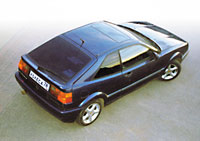 True, it is not so noticeable and effective as on cars with turbocharged or systems for changing phases of gas distribution, but it becomes a source of an additional dose of positive emotions. Powerful brakes and wide tires easily fed countless joules of the kinetic energy of the progressive movement for the forces of friction, on dry asphalt, leaving the anti -lock system without work. We tested it on a section of the road sprinkled with sand and once again pleased with the perfection of technology: ABS enters the game at the very last moment, when the skills of the vast majority of drivers are no longer enough to stop the car at a minimum distance.
True, it is not so noticeable and effective as on cars with turbocharged or systems for changing phases of gas distribution, but it becomes a source of an additional dose of positive emotions. Powerful brakes and wide tires easily fed countless joules of the kinetic energy of the progressive movement for the forces of friction, on dry asphalt, leaving the anti -lock system without work. We tested it on a section of the road sprinkled with sand and once again pleased with the perfection of technology: ABS enters the game at the very last moment, when the skills of the vast majority of drivers are no longer enough to stop the car at a minimum distance. The car is very swivel and obedient. The behavior of Corrado at high speeds was especially impressed: the car is on the highway as a glove, instantly and implicitly reacting to the turn of the steering wheel and at the same time without showing the slightest signs of nervousness. A competent distribution of mass along the axes, the sharpened suspension and a tiny rear overhang are reduced almost to zero, the probability of developing a skid under a sharp discharge of gas. This is the upper class! At relatively low speeds, the only thing you can complain about is the minimum deficiency of reactive force on the steering wheel. But it is noticeable only if you start digging.
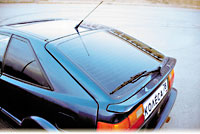 It can be assumed that on the surface of the Western European autobahns Corrado G60 is magnificent (of course, for its price). And he frankly grazes in front of Russian roads - the suspension transfers to the body the whole picture of the condition of the road surface without exception: on small irregularities, the car shakes, joints and seams are felt as if he had drove along them the fifth point, and the blows that throw the car on the battered sections of the coating Immediately drop the speed and even doubt whether you are going to eight. Honestly, it’s a pity for such a technique.
It can be assumed that on the surface of the Western European autobahns Corrado G60 is magnificent (of course, for its price). And he frankly grazes in front of Russian roads - the suspension transfers to the body the whole picture of the condition of the road surface without exception: on small irregularities, the car shakes, joints and seams are felt as if he had drove along them the fifth point, and the blows that throw the car on the battered sections of the coating Immediately drop the speed and even doubt whether you are going to eight. Honestly, it’s a pity for such a technique. When traveling around the city, such a constructive flaw gets out as unsatisfactory visibility back through the glass of the third door, and you will not see much on the sides. We have to rely only on external mirrors.
Summary.
Volkswagen Corrado G60 is surprisingly fast both on the highway and in the city, where it seems to keep up with the task of oh-very difficult. Ready to shoot at any second, small, brisk and flexible in management, this car is able to famously make a road in dense traffic. Disassembly design will serve as protection from vandals and will save from excessively close attention from the traffic police. And the folding rear seats do not allow us to talk about him as completely devoid of practicality. And if you are ready to put up with a mediocre level of comfort and the prospect of frequent suspension repairs, then why not?
And if you fell in love with Corrado at first sight, then you have no choice.
Leonid Klyuyev, photo of the author
Source: Wheel magazine [No. 40/2000]






